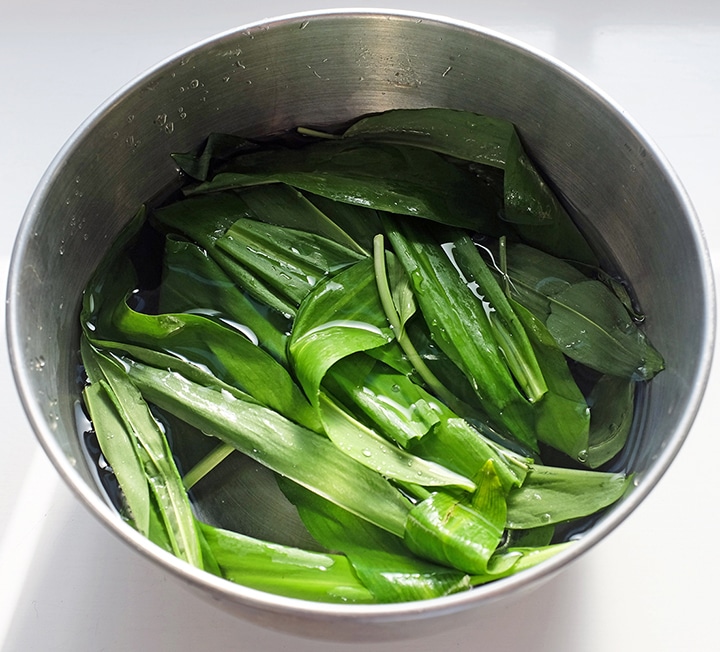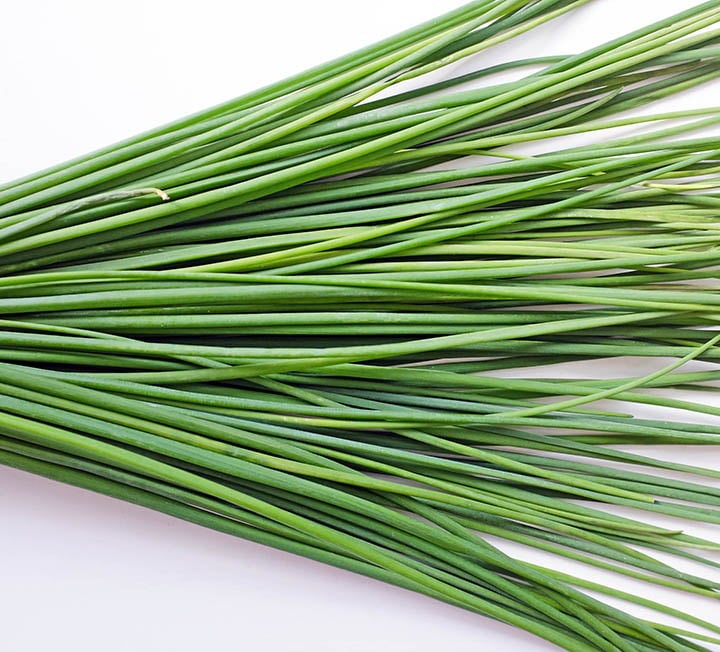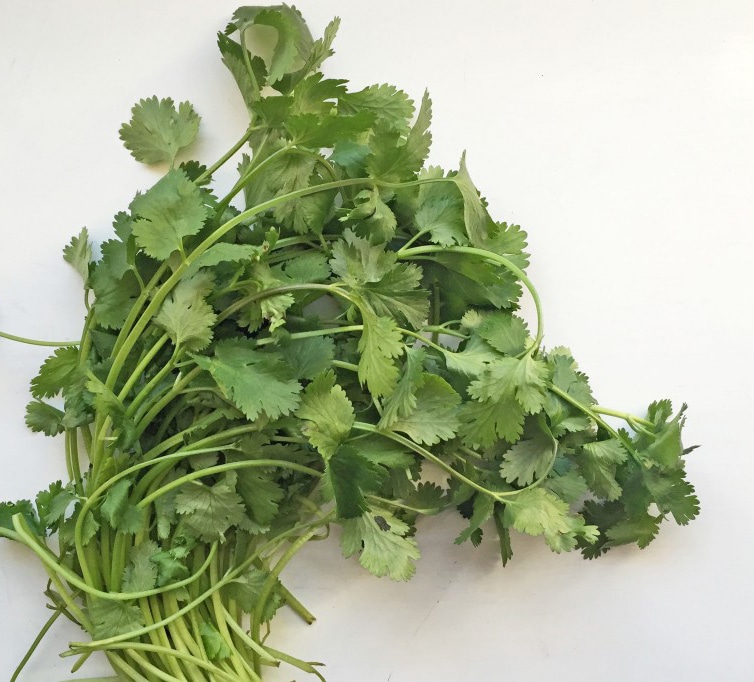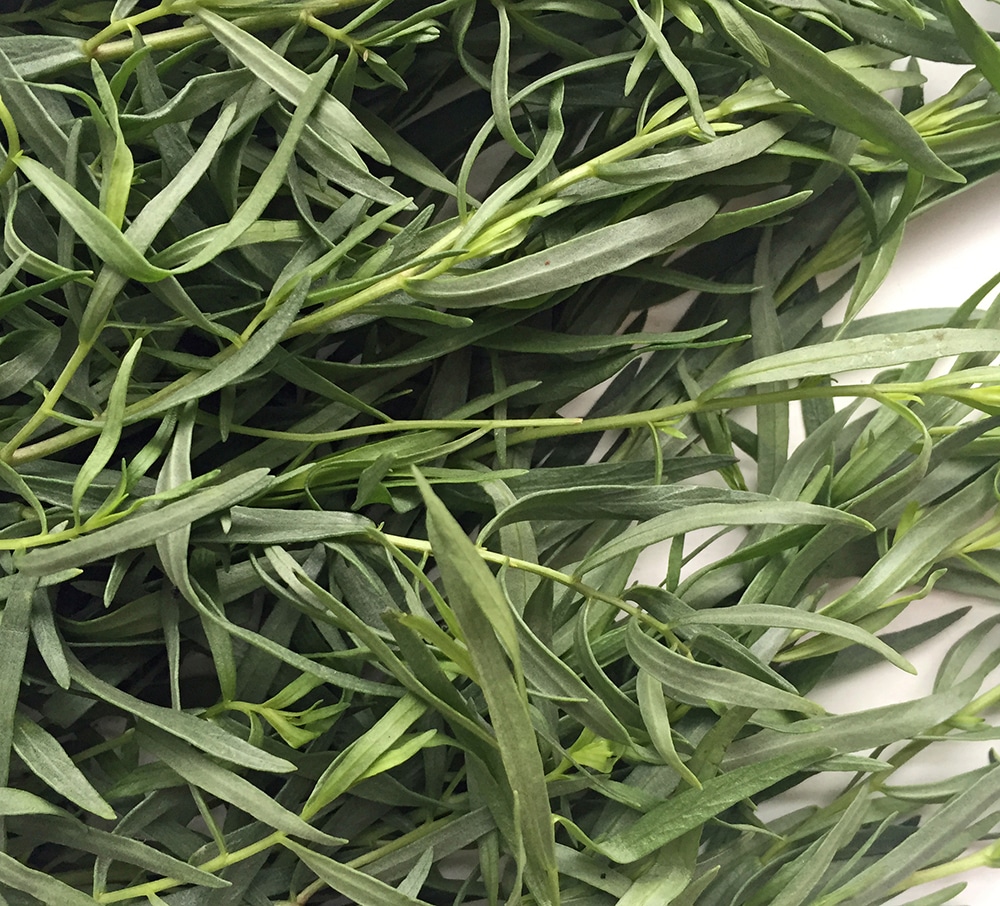The herb guide: wild garlic
Ed Smith, author of The Borough Market Cookbook, looks in depth at the many fresh herbs available in the Market. This time: wild garlic


“USE RAW WILD GARLIC SPARINGLY – IT MIGHT LOOK MILD AND DELICATE, BUT BOY DOES IT PACK A PUNCH”
Image: Ed Smith
I recently realised that I’ve never really covered the question of what makes a herb a herb. That realisation struck when I was pondering whether wild garlic – or ramson, as it is otherwise known – qualifies for inclusion in this series.
As it happens, I determined well before getting too bogged down in detail that, regardless of the true definition of ‘herb’, these pungent allium leaves should be included on a matter of practicality: despite their ‘wild’ nature, we increasingly see these long, wide, pointed, vivid green leaves on the grocer shelves next to chives, coriander, mint and so on. They carry and impart an incredible flavour, and over the last few years have become an essential part of the British cook’s springtime larder.
In any event, after a spot of foraging through botanical guides and dictionaries, it’s clear that wild garlic fits technically too. A herb is defined as “any plant with leaves, seeds, or flowers used for flavouring, food, medicine, or perfume”; and “any seed-bearing plant which does not have a woody stem and dies down to the ground after flowering”. To my mind at least, wild garlic fits both of those.
Wild garlic grows in moist soil, usually under partial cover of deciduous but not yet leafy trees (often near to bluebells). The season runs from around March to May, depending where you are in the country. You’ll easily identify a patch of wild garlic as there’ll be more than a hint of garlic in the air – it’s a bit of a give-away. Moreover, towards the end of their season, a flurry of beautiful six-pronged white flowers highlights their presence.
Storage
Whether you’ve found and picked the leaves yourself, or bought them from a grocer, my advice on storage remains the same: use them as quickly as possible. Wild garlic leaves wilt in moderate heat and bruise easily too, so it’s best just to pick or buy a few of them, and in short order.
You should store the leaves in the paper or plastic bag or plastic box that you buy them in (or put them in something similar if you did the foraging). Then put them in the fridge.
I tend to then ‘refresh’ the leaves in a bowl of very cold water before using them. Or, if on the same day and I’ve space in the fridge / kitchen, I’ll cut out the middle storage process and just leave the leaves in the water until required.
Don’t bother trying to dry garlic leaves. You could, though, make an oil as per the chive oil in my previous post. Or beat into butter, roll in clingfilm and freeze until your wild garlic butter is required.
Cooking tips
There are three ways to use wild garlic in your cooking:
The first is raw as a chopped garnish. Slice finely with a knife and sprinkle is probably the best advice to give here. But use raw wild garlic sparingly – it might look mild and delicate, but boy does it pack a punch.
The second is to wilt the leaves in a little butter or oil, or very quickly blanch them. This quick application of heat mellows and rounds the flavour of the herb. It’s also my preferred way to use it – it’s so powerful when raw that you’d struggle to get through all of the garlic you’d picked or purchased if you only ate it in its fresh state.
Finally, many chefs will pickle wild garlic (called ‘ramps’ in the States), and add it as a punchy seasoning to numerous foods throughout the year.
Oh, one other thing: do use the flowers if you have them – they also carry a delightful garlicky flavour. Keep them raw and just sprinkle over your dish at the last minute; they’re not as harsh as the leaves, and they sure are pretty.
Classic uses
In terms of flavour pairings, it’s hard to say what ingredients you wouldn’t match wild garlic with (except sweet things). Basically, where normal garlic goes, wild garlic will too. That said, the likes of white fish, salmon, lamb, beef, eggs and wild mushrooms are particular fans.
It wouldn’t be correct to state that wild garlic has particular ‘classic uses’ in the same sense of many of the Mediterranean herbs covered in this series. However, well established uses and flavour combinations include:
— In a pesto, pistou or picada, obviously swapping normal garlic for the flavour in the raw leaves. You’ll see some recipes that completely substitute wild garlic for basil or parsley leaves too. But for me, this is too much. I’d keep a handful of either of those two herbs in the mix to mellow the effect of the garlic.
— As part of a sauce vierge (green sauce) mix alongside tarragon, parsley, capers, anchovy and a splash of red wine vinegar.
— Blanched at the last minute with asparagus.
— Beaten into a butter to melt over griddled beef steaks and lamb chops, or place within a wild garlic chicken kiev.
— Stirred through creamy risottos.
— Cooked in an omelette or with scrambled eggs.
Market herb hero
Any of the grocers stocking the herb – you’ll find it at Fitz Fine Foods and Turnips (and probably the other grocers too from time to time) – plus Neal’s Yard Dairy who, towards the end of the wild garlic season and then for a month or two after, may well have the wild garlic-wrapped version of Lynher Dairy’s Cornish yarg.
A recipe suggestion
Try my wild garlic & new potato frittata: because of its short shelf-life, I prefer to use as much of the wild garlic in my possession at the same time as possible, which usually means applying a bit of heat to mellow the flavour. One way to do that is to use a good bunch of the stuff in a frittata.


